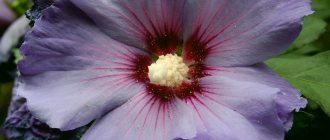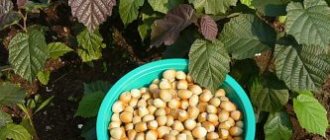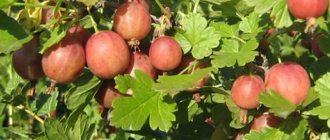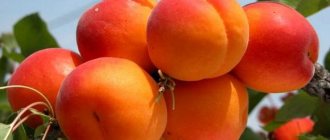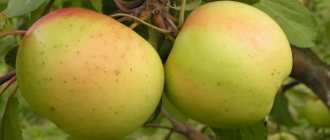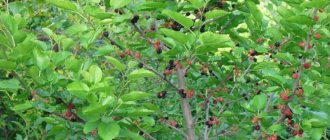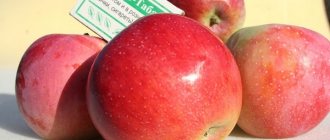Where is pomegranate grown?
Pomegranate is a very ancient plant, the cultivation of which began in ancient times. Initially, pomegranate grew in Central Asia, Turkey, Transcaucasia and Iran. However, it then spread throughout the Mediterranean countries, reaching North Africa and Southern Europe, and as a result, it now grows in almost all countries with a tropical and subtropical climate.
In Russia, pomegranate can be found mainly in the southern regions - in the Crimea and the Azov region, in the Krasnodar Territory and warm places in the North Caucasus. Sometimes you can find a plant in the middle zone, but such plantings are extremely rare. The fact is that pomegranate is very heat-loving, and planting and caring for pomegranate in open ground in regions with frosty winters is simply impossible.
Winter hardiness
The pomegranate tree, which mostly grows in a subtropical climate and is extremely thermophilic, is a garden crop that has fairly good winter hardiness. In the winter season, when the temperature outside is sub-zero, in open ground pomegranate is able to survive even short-term drops in the thermometer to -15˚ C. However, even this ability to withstand sub-zero temperatures does not make this fruit plant truly winter-hardy. It cannot withstand severe winters, when the average temperature outside reaches -10˚ C or less, without additional shelter and insulation.
Winter hardiness of pomegranate
For a heat-loving plant that feels most comfortable in the subtropics, pomegranate is quite resistant to cold, it can tolerate short frosts down to -15 °C. But, unfortunately, this does not make it truly winter-hardy, and the frost resistance of pomegranate remains very low. Not a single variety is able to safely survive a long, cold winter.
Already at -18 °C the plant begins to freeze out, the entire above-ground part of the pomegranate dies off, right down to the root collar. If the temperature drops even lower, the pomegranate root system also dies. The ideal temperature for pomegranate in winter is not lower than - 15 ° C; in such conditions it feels comfortable.
The most common varieties of pomegranate
There are many different varieties of this southern plant in the world.
Each country loves its own variety of pomegranate, but there are also well-known varieties that are loved by many. There are many varieties of pomegranate in the world. Pomegranate varieties are divided into those with hard seeds in juicy grains, and those with soft seeds. Hard bones are considered a sign of poor quality. It's like a wild apple tree and a good variety of grafted apple tree. Varieties with soft seeds are very capricious and require care. But the quality of their fruits is amazing.
'Guleisha pink' and 'Guleisha red'
'Gyuleysha' ('Gyulosha') is the best variety cultivated in Azerbaijan.
The fruits are elongated and round in shape, with a thin skin. In 'Guleisha pink' it is pink, and in 'Guleisha red' it is carmine red with streaks (stripes) at the base of the fruit. The grains are juicy, dark purple in color. Pomegranate fruits of the variety 'Gyuleisha (Gyulosha) pink'. Photo from the site agroxxi.ru
Both varieties have a sweet and sour taste.
'Ak Don Crimean'
An excellent variety for growing in the vicinity of Crimea.
It is cultivated even in the steppe part of Crimea, but requires shelter for the winter. It is distinguished by large oval fruits. You will recognize the variety by its creamy thin skin with red spots and blush on one side (usually the southern side). And his neck is short and thick. 'Ak Don Crimean'. Photo from the site i.otzovik.com The taste is sweet, with a barely noticeable sourness, the grains themselves are pink-red. In the middle zone, I have not met a gardener who would grow this variety of pomegranate with a bang, but if you manage to buy the fruits at the market, they leave a lot of impressions. According to gardeners, the variety is easy to grow and the fruits have excellent taste.
'Kizil-anor'
The variety is early ripening, cultivated in Uzbekistan. The advantage of this variety is its early ripening. At the beginning of October, you can already harvest, the fruits range from small to large. The skin is pink-scarlet, the grains are red, medium in size and sweet and sour in taste. 'Kizil-anor'. Photo: skydogy, img-fotki.yandex.ru
Conditions for growing pomegranate
In general, pomegranate can be considered a rather unpretentious plant; it is not too demanding on the quality of the soil, and calmly reacts to short-term drought or slight waterlogging. It’s easy to create conditions for it to grow - just select a site with light, neutral soil.
But at the same time, pomegranate makes two categorical requirements for growing conditions. It needs light and warmth; with a lack of sun and in a cold climate, the tree will not be able to develop. To grow in open ground, it is necessary to plant pomegranate in a well-lit area of the garden and, what is much more difficult, not to allow the temperature to drop below -15 °C throughout the year.
Pomegranate propagation
Pomegranate is propagated by cuttings (vegetative method) and seeds.
Seed propagation method
Take the seeds from a fresh, well-ripened fruit; there is no need to peel them. Pomegranate seeds
- Distribute the seeds over the surface of the moistened soil, covering them with a layer of about 1.5 cm of soil.
- While the seeds are germinating, the soil should not be allowed to dry out.
- When the seeds germinate and reach a height of 3 cm, they are planted or replanted so that the distance between seedlings is at least 4 cm.
- When the seedlings grow so much that there are no gaps between the seedlings, they are picked again.
Propagation by cuttings
Cuttings are cut from annual woody shoots of young plants. The size of the cutting is about 25 cm. You can also use shoots for these purposes. Well-fertilized and drained areas of soil are suitable for rooting cuttings. The cuttings should be rooted in soil heated to +2 °C to a depth of about 10 cm. In this case, 1 internode should remain above the soil surface. Green branches take root in late May - early June.
When to plant pomegranate
Heat-loving pomegranate is planted in open ground in the spring, usually in late April or early May. By the time of disembarkation, the air should steadily warm up to + 10-14 °C, and daylight hours should increase significantly compared to the winter period.
Important! Planting pomegranates before the specified date is dangerous, including due to the likely return of frost; even mild negative temperatures can destroy a seedling that has not had time to take root in the ground.
Landing
Growing a pomegranate tree is quite labor-intensive. It is necessary to choose the right soil, fertilizing, properly organize watering, pruning and wintering. The life span of the bush is 70 years.
First of all, you need to decide how you are going to plant the crop - seedlings or seeds. Both methods have a right to exist. But it’s still better to stick to cuttings.
The optimal place for planting is open, sunny, with good ventilation. The soil should be crushed stone. A drainage system is required.
Seedlings can be planted in May or early summer. The earth should warm up to 18°C. Before planting, you need to fertilize it. Mullein is best suited.
The step between bushes must be maintained at 1 - 1.5 m. The roots must be carefully straightened.
As soon as you plant the shrub, be sure to water it. The water should be warm and settled. In the future, make sure that the soil does not become waterlogged - this can lead to rotting of the roots.
We have to wait for flowers next year.
Where to plant pomegranate on the site
The plant is unpretentious in relation to the soil, but is sensitive to the amount of sunlight. Therefore, growing and caring for pomegranates should be done on the well-lit, warm side of the garden. It is best to place the grenade on a hill; be sure to ensure that the light of the grenade is not obscured by taller trees or the walls of buildings.
Pomegranate prefers sandy or loamy soil; it should be well-drained, loose and saturated with oxygen, neutral or slightly acidic.
What does a pomegranate look like and where does it grow?
Pomegranate trees grow in Eastern Transcaucasia and Central Asia. Their distribution area in the south reaches the shores of the Arabian Sea and the coastal areas of Asia Minor in the west. Pomegranate is a deciduous, fruiting bush or tree, no more than 5-6 m high, with thin, prickly shoots. Pomegranate leaves have a glossy surface. The flowers are funnel-shaped, orange-red. Blooming pomegranate is very beautiful and attractive. In place of the flowers, spherical and large fruits and berries are formed, having a leathery pericarp.
To obtain large, juicy and tasty fruits, hot weather is required throughout the summer. In winter, pomegranate leaves fall off. The tree tolerates frosts down to -12°C.
How to plant pomegranates in open ground correctly
The success of growing pomegranate in open ground largely depends on the correctness of its planting. There are several ways to root a pomegranate tree in the garden.
How to plant pomegranate seedlings
Growing a seedling is the easiest and most convenient way, since such a pomegranate takes root most easily in the soil and quickly begins to bloom and bear fruit.
Preparations for planting pomegranates in open ground should begin at least a month in advance. The soil in the selected area is carefully dug up and cleared of weeds, then humus is added to it in an amount of 5 kg per meter, and then the area is covered with impermeable material so that beneficial microflora is formed in the ground.
The landing algorithm looks like this:
- at the end of April or beginning of May, a hole about 80 cm deep and 60 cm in diameter is dug in the prepared area;
- High, even pegs are installed in the center of the hole for subsequent gartering of the pomegranate;
- 10 cm of expanded clay, gravel or broken bricks are placed at the bottom of the hole, earth, fertile soil mixed with humus and sand are poured on top of the hill, and the top of the hill should reach the edge of the hole;
- the seedling is carefully lowered onto the top of the earthen hill, the roots are spread along its sides, and then the hole is completely filled with earth;
- the seedling is tied to pegs, and then the earth is lightly compacted around the trunk, a low earthen bank is formed around the circumference, and the plant is watered.
It is impossible to plant pomegranates in the fall - a young plant that has not had time to take root properly is unlikely to be able to withstand even a moderately cold winter.
Attention! When planting, it is important to monitor the position of the root collar; it should remain above ground level.
How to plant pomegranate cuttings
Growing pomegranate from cuttings is another way to root a pomegranate tree in your area. Cuttings are used less frequently than seedlings, but the method is well suited if you need to increase the pomegranate population from an existing bush.
Before cutting pomegranates, it is necessary to cut the required number of shoots from the mother bush. It is best to take cuttings from young branches that have already begun to woody; each cutting should have at least 6 buds.
- Shoots are usually harvested in the fall, since pomegranate cuttings must be kept in cool conditions before planting in spring.
- The prepared shoots are wiped with a cloth soaked in a weak solution of copper sulfate, allowed to dry naturally, and the ends are wrapped with a damp cloth. Then the cuttings are placed in a plastic bag and placed on the top shelf of the refrigerator until spring. About once a month it is recommended to check the shoots and, if necessary, moisten the fabric.
- At the beginning of April, the cuttings are taken out of the refrigerator and placed with the lower end in a container half filled with warm water for a month. Place the container in a warm but shaded place; add water as it evaporates.
- At the beginning of May, prepared cuttings are planted directly in open ground - the stage of rooting shoots in pots is usually skipped. To plant pomegranate cuttings, it is necessary to choose a time when the return frosts have already ended and the soil has warmed up to at least + 12 °C in depth.
- To grow cuttings, select a place that meets the basic requirements of pomegranate for soil and lighting, dig small holes in the ground - when buried above the surface of the ground, only 1 bud of the cutting should remain.
- If you plan to plant several cuttings at once, then leave gaps of about 20 cm between them so that later the plants do not interfere with each other’s development.
- The cuttings are lowered into the holes, slightly tilted towards the sunny side, and the hole is filled with earth, and then the young plant is hilled up to the remaining bud.
The planted cuttings must be carefully watered and subsequently moistened the soil once a week. From time to time, the soil is loosened for better oxygen supply, and fertilizing is also applied once a week - first superphosphate, then complex, consisting of potassium, superphosphate and urea.
Rooting of cuttings takes about 2 months. After this time, young pomegranates are carefully dug up and their condition is assessed. A well-rooted cutting should reach about half a meter in height, have at least 4 lateral branches and well-developed roots. If the cutting meets these requirements, it can be transferred to a permanent place with similar growing conditions.
How to plant a pomegranate tree from a seed
Growing pomegranate from seeds is rarely practiced in open ground; usually the seedlings are so weak that they simply do not take root in the soil. Therefore, it is better to grow with seeds to grow pomegranate indoors, or to transplant the plant into the soil after it has become qualitatively stronger.
For sowing, take several seeds and place them in small containers with the usual soil for pomegranates. The seeds are lightly sprinkled with earth, watered, the containers are covered with film and put in a bright place without direct sunlight. Shoots usually appear after 2-3 weeks, after which the film can be removed. Pomegranate seedlings are regularly watered, fed with complex fertilizers every 1.5-2 weeks and periodically transplanted into larger containers.
Advice! When the pomegranate is properly strengthened, after hardening in the fresh air, it can be planted on the site or left as an indoor crop.
Planting a crop
A representative of a heat-loving crop, it is undemanding to the composition of the soil and slight waterlogging of the soil. However, this does not mean that agrotechnical requirements, including the rules for planting pomegranates, can be neglected. An important nuance is the exact determination of time. The survival rate of the crop and the speed at which it enters the fruiting phase depend on this.
Deadlines
The right time to plant a fruit tree in the garden is spring. As a rule, the optimal timing is at the end of April - beginning of May. The main parameter you should focus on is temperature. If the air has warmed up to 10-14 °C, you can begin planting. When such indicators are reached, daylight hours already increase significantly. If the temperature values are unstable, it is better to wait: even short-term frosts before the pomegranate is completely rooted can cause its death.
Site selection and soil preparation
The culture prefers sunny areas. The heat-loving pomegranate should be grown in a well-lit place, protected from the wind. In addition, the plant develops well on loam or sandy loam soils with high drainage properties. To ensure free access of oxygen to the roots, the soil structure must be loose. The appropriate pH for pomegranate tree is neutral or slightly acidic.
You may be interested in:
Apple tree “Candy”: features of cultivation and care Apple tree varieties Read more…
Prepare the soil for planting in advance - at least a month in advance. The area is cleared of weeds and dug up, having previously distributed an even layer of humus. Consumption rate – 5 m/m2. Organic matter acts as an excellent leavening agent and also saturates the soil with useful macroelements. If the soil is alkaline, add superphosphate or high peat. The area is then covered with an impermeable material, which allows the formation of beneficial microflora.
Open ground planting technology
After the deadline, you can plant a pomegranate tree. Sequencing:
- In the prepared area, dig a planting hole with dimensions of 80 x 60 cm, where the first value is the depth, the second is the diameter.
- A flat and strong peg is installed in the center.
- Lay a 10 cm drainage layer of expanded clay or gravel (you can even use broken bricks).
- A mound is formed from a fertile soil mixture, which contains garden soil, humus and sand in equal proportions.
- Place the seedling on the embankment, straighten the roots and fill the hole with substrate.
- The plant is tied up.
- The soil in the tree trunk circle is slightly compacted so that there are no air pockets around the roots, which can lead to the development of fungus, and watered.
How to grow pomegranate in the country
Proper planting is only the first stage of growing pomegranate. To get a strong tree capable of bearing fruit, you need to provide it with high-quality care and step by step grow pomegranate according to proven algorithms.
Watering and fertilizing
Pomegranate does not have particularly strict requirements for the amount of moisture and fertilizers. But for the rapid growth of a young tree and subsequent stable harvests, it is worth following the basic rules.
Water the pomegranate about once a week, or twice or thrice a week in hot, dry months. The soil around the pomegranate should not be waterlogged, but the soil should always remain slightly moist. After watering, it is recommended to loosen the soil - this will not allow moisture to stagnate and saturate the soil with oxygen.
As for feeding, in the first year the pomegranate will have enough fertilizer applied during planting. In the second year of life, you will need to feed the tree again with nitrogenous fertilizers in early spring and complex solutions closer to autumn, before fruiting.
Trimming
Caring for pomegranate seedlings and adult plants in open ground necessarily includes pruning. The pomegranate should be formed in the form of a spreading bush or tree on a low trunk with a large number of side branches. A pomegranate seedling is usually cut at a height of about 75 cm along the central shoot, the lowest and weakest branches are removed and about 4-5 developed shoots are left.
In subsequent years, the pomegranate is pruned at the tops of the branches by about a third of the annual growth. Every year it is necessary to carry out sanitary pruning, which consists of removing root shoots, as well as broken, dry and weak shoots.
Protection from diseases and pests
Pomegranate is a fairly disease- and pest-resistant crop, but some insects and fungal diseases also threaten this plant.
- Of the fungi, branch cancer is especially dangerous for pomegranate. The disease manifests itself primarily by cracking of the bark, drying out of the shoots and the appearance of ulcers on the branches of the tree with porous growths along the edges. Most often, cancer is provoked by low temperatures in winter, which weaken the pomegranate tree. To treat the plant, careful sanitary pruning is carried out and the cuts are treated with fungicidal agents, and subsequently the pomegranate is properly insulated during cold weather.
- Among the pests, the threat to pomegranate is the pomegranate aphid, which settles on young shoots and leaves of the plant. You can get rid of it using insecticides, homemade soap and tobacco solutions.
- The pomegranate moth can also harm the pomegranate; it lays eggs directly in the calyx of the fruit of an adult pomegranate or in damaged areas of the peel, and the emerging caterpillars eat the pomegranate fruits from the inside, which leads to the rotting of the pomegranates. Pest control is carried out by spraying with insecticides even at the stage of fruit set.
For preventive purposes, it is recommended to carefully monitor the condition of pomegranate shoots and leaves and promptly remove all diseased parts. In addition, during the fruiting period, fallen fruits that fall to the ground should be collected and destroyed so that when the fruits rot, they do not turn into an ideal environment for the proliferation of bacteria and insects.
Preparing for winter
Warming the plant for the winter is the most important stage in growing a pomegranate tree. Since at temperatures below - 10 ° C the heat-loving tree begins to freeze, immediately after harvesting it begins to be prepared for wintering.
- The lower branches of the pomegranate are tilted close to the ground and tied to pegs so that they do not straighten out.
- Leaves and young shoots, important for fruiting, are treated with Bordeaux mixture, and a dense layer of fertile soil is poured around the trunk and the soil is mulched with a layer of up to 15 cm.
- Spruce branches are laid out around the trunk, trying to cover the pomegranate branches as much as possible.
It is not necessary to remove the winter shelter immediately with the onset of spring, but only after establishing a stable positive temperature. After removing the spruce branches, the pomegranate is carefully treated with fungicides to prevent the development of fungus on the surface of the tree and in the soil near the trunk.
Growing rules
Planting is the starting stage of growing a pomegranate tree. In order for the plant to be strong and bear fruit, it needs good care. Pomegranate is able to grow virtually without attention from the gardener, but compliance with agrotechnical measures brings its first fruiting closer and guarantees stable annual yields. If the pomegranate tree grows by itself, it will gradually “go wild”, and the fruits it bears will become small.
To preserve the tree and its yield, the plant must be regularly watered, systematically fertilized, pruned according to a schedule, and sprayed against diseases and pests. To speed up fruiting, the plant is grafted, this is especially important for specimens grown from seed. Also, when this fruit crop is not grown in the southern regions, the plant must be insulated for the winter.
Feeding and watering
The pomegranate tree does not have strict requirements for the level of soil moisture, nor for fertilizing. In the first year, this plant has enough of the nutrients that were added to the soil before it was planted in a permanent place. But, for the 2nd year, fertilizing with nitrogen-containing preparations is required. It is applied before active sap flow begins, when the buds have already swollen, but have not yet blossomed. In the autumn season, approximately in September, pomegranates need to be fed with complex fertilizers.
However, to accelerate the development of a young seedling and maintain its stable yield, the plant must be watered approximately once every 7 days. You should not allow the soil in the tree trunk to become waterlogged, but the soil should always be slightly moist. Despite the ability of the pomegranate tree to tolerate short-term dry periods, when there is a lack of moisture, it develops extremely slowly.
On a note!
After watering, it is advisable to loosen the soil in the tree trunk circle - this measure will prevent stagnation of moisture in the soil and increase its breathability.
Trimming
Just as with watering and fertilizing, a pomegranate tree can survive and even bear fruit without systematic pruning. However, the plant needs this manipulation for proper development. It is recommended to form a pomegranate crown as a spreading bush or compact tree with a relatively low trunk and a significant number of side branches. A pomegranate seedling is often cut at a height of 75 cm relative to the central conductor. The lowest and weakest shoots are cut off, leaving only 4-5 developed branches.
In subsequent years, the pomegranate tree is cut off at the ends of the branches, removing approximately a third of the annual growth. In addition to such pruning, the pomegranate also needs sanitary pruning every year. During this manipulation, all root shoots are removed, as well as damaged shoots - broken, diseased and weakened. It is also advisable to remove those branches that grow inside the crown and thicken it excessively, disrupting its air and light permeability. If they are not removed, then inside the crown there will be an environment optimally suitable for the development of diseases and pests.
Graft
To speed up the first flowering and fruiting, as well as to increase the chances of preserving the varietal characteristics of the fruit, a pomegranate tree is grafted. When the plant was propagated by cuttings or a seedling was purchased, this manipulation is not necessary, but in the case of a tree grown from a seed, grafting is necessary. Also, this manipulation will improve the appearance of the plant, giving it greater decorativeness and uniformity of the crown, since many seed pomegranates are often “one-sided” and not lush enough.
This effect (an ordinary pomegranate tree obtains the varietal characteristics of the grafting material) occurs quite often. Thus, there are some varieties whose grafting onto a pomegranate grown from a seed helps improve its characteristics. Gardeners often graft varieties Nana, Sokoti granta and terry. In the first case, the tree will be dwarf, and the fruits will be small and decorative, like the foliage. If Sokoto pomegranate is grafted, the bush will be covered with pinkish flowers during the flowering phase, and the fruits will grow large and sweet. When they want to grow a completely decorative bush, they graft double pomegranate, which does not bear fruit, but is extremely beautiful during the flowering phase. There are several ways to graft pomegranate:
- in a side cut;
- simple copulation;
- into cleft
On a note!
Gardeners often choose simple budding, since this method can be used already in the 2nd year and often the grafting material takes root well.
For simple budding, select a cutting of the same diameter as the branch to which it will be grafted. In this case, the grafting material must have at least 4-5 developed buds, and its length is about 5 cm. To make the fusion go better, it is permissible to soak the cuttings in Kornevin’s solution for 8 hours. An oblique dissection is performed on the graft and scion at an angle of 30˚ by 2.5-3 cm. The places of the cuts must fit as tightly as possible. The joint is covered with garden pitch or RanNet paste, and then wrapped with a garden bandage (insulating tape is also suitable). The bandage is not removed until complete fusion is achieved. Using this technique, it is possible to graft several different varieties onto one specimen at once.
The lateral cut method is used when the cuttings have a smaller diameter than the rootstock branch. The cutting is cut at 30˚ on both sides, making a wedge. The rootstock branch is split on the side so that the cutting can be placed. The junction, after treatment with garden varnish, is tightly wrapped with a thick bandage or electrical tape. The bandage is removed approximately after 2-3 months.
The splitting method is used when they plan to completely replace the variety. To do this, completely cut off the pomegranate tree, leaving no more than 20-30 cm of the central conductor. It is advisable to use a cutting of similar thickness for grafting. The scion is cut from the sides at 45˚. The rootstock trunk is split in the middle and connected to the scion. The junction is treated with garden varnish and rewound with electrical tape or a garden bandage.
Diseases and pests
The pomegranate tree is quite resistant to diseases and attacks of harmful insects. However, some fungal diseases can damage this garden crop. Branch cancer is a dangerous disease for the plant. Its first signs are cracking of the bark, the appearance of ulcers with porous growths on the shoots, and drying out of the branches. Treatment consists of cutting off all damaged shoots and subsequent treatment with fungicidal agents. To prevent this disease in the future, the tree is better insulated for the winter.
Of the harmful insects, the plant is susceptible to attacks by the pomegranate aphid, which is located on young foliage and shoots that have not yet lignified. They solve the aphid problem by treating wood with insecticides, tobacco or soap solutions. Also, the plant can be attacked by the pomegranate moth, which lays eggs directly in the calyx of the fruit or in a damaged peel. The caterpillars eat the pomegranate from the inside and it rots. The problem of pomegranate moth is solved by spraying the tree with insecticides at the stage of fruit set.
Attention!
Prevention of diseases and pests of pomegranate means regularly spraying the plant with insecticides and fungicides in the spring. You also need to monitor the condition of foliage and branches, removing all damaged ones in a timely manner. The fallen fruits are collected immediately so that they do not rot under the tree.
Wintering
It is necessary to insulate the pomegranate before winter, since its above-ground part begins to freeze out already at an air temperature of about -10˚ C. The pomegranate tree begins to prepare for the cold season immediately after harvesting. The lower shoots are tilted towards the ground and fixed in this position, and the fruiting and young branches are treated with Bordeaux mixture. In this case, the tree trunk circle is mulched (layer - about 15 cm). Coniferous branches are also laid out around the trunk so as to cover the plant as much as possible.
The shelter that helped the pomegranate tree survive the winter season is not removed immediately with the onset of the spring thaw. The plant is removed from insulation only when the risks of return spring frosts have virtually completely disappeared, and the temperature outside is already stable above zero. When coniferous branches are removed, the pomegranate tree is carefully treated with fungicidal agents to prevent the risk of fungal diseases developing on the shoots and in the tree trunk.
Features of growing pomegranate in open ground in different regions
Growing pomegranate is best done in a subtropical climate in the southernmost regions of the country. However, if the correct agricultural practices are followed, it is possible to grow pomegranate in colder regions, although in this case the pomegranate will require increased attention from the gardener.
Growing pomegranate in Crimea
Crimea is ideal for growing pomegranate trees - throughout the year it maintains exactly the weather that pomegranate prefers. Planting and caring for pomegranates in Crimea means that the pomegranate is watered and fed in a timely manner, as well as regular formative and sanitary pruning.
Since winters in Crimea are quite warm, before the onset of cold weather it is enough to carefully cover the pomegranate with spruce branches and mulch the ground around the trunk with a thick layer. This must be done at the end of October, after fruiting has ended.
Growing pomegranate in the Krasnodar region
The Krasnodar region is another comfortable zone for pomegranate in Russia. As in Crimea, winters here are mild, so gardeners can only provide basic pomegranate care - watering, fertilizing and regular pruning.
Since even in warm winters pomegranate can freeze severely, it is necessary to cover and thoroughly mulch the tree before the onset of cold weather. But pomegranate can easily tolerate temperatures down to -10°C or -15°C with basic care.
Growing pomegranate in the Moscow region
Pomegranate takes root in central Russia with great difficulty, since even warm winters in the Moscow region are accompanied by at least a couple of weeks of severe frosts. When the temperature drops below - 15 ° C or - 17 ° C, the pomegranate will inevitably freeze, at best above the surface of the earth, and at worst - to the very roots.
In isolated cases, gardeners manage to ensure a safe winter for the pomegranate by building a real “house” over the plant from materials impenetrable to snow and wind and covering such a hut with spruce branches and dense snow. However, pomegranates rarely bloom in such conditions, and you can’t expect them to bear fruit at all. If you want to grow pomegranate specifically to obtain juicy fruits, you should use a closed, heated greenhouse.
Growing pomegranate in Siberia
In the harsh climatic conditions of Siberia, pomegranate does not grow in the open air; there are no winters so mild here that the heat-loving tree can safely endure them. However, even in Siberia, you can grow a pomegranate tree in a greenhouse, greenhouse, or indoors.
Planting a pomegranate
An important condition for growing pomegranate is the total sum of active temperatures of at least 3000 and about +15 °C in winter.
It is warmth that is the key to large and good fruits. Young pomegranate seedlings Pomegranate is undemanding to soil. Can grow even in damp conditions. But you still need to prepare the soil and arrange drainage so that moisture is removed and does not stagnate at the roots. Drainage can be crushed stone or expanded clay, less often gravel. The soil for pomegranate may have an alkaline reaction and a loamy structure, but in this case it needs to be properly “charged” with organic and mineral fertilizers.
Pomegranate is undemanding to soil
- The planting hole is dug in the same way as for many fruit trees (60x70 cm);
- A fertile layer of soil (about 15 cm) and humus mixed with soil (somewhere a little larger than a bucket) are poured onto the bottom;
- The roots are straightened and carefully covered with earth;
- After planting, the soil is well watered and mulched with dry weeds, straw or humus. This will help the moisture stay in the soil longer.
If you will be covering a pomegranate for the winter, it makes sense to plant the seedling at an angle of 60-45° to the south.
Harvesting
Pomegranate fruiting begins in the fall, and the harvest is usually harvested in October. It is quite simple to understand that the fruits are ripe - pomegranates acquire a uniform red or yellowish-pink color, depending on the variety. At this point, they must be removed from the branches, since overripe fruits may crack or fall to the ground and rot.
Pomegranate fruits are stored for quite a long time, and they need to be kept at a temperature of about 2 degrees with good ventilation. You should not leave pomegranates on an open balcony or veranda in winter at subzero temperatures, as this will cause the fruits to rot.
Harvest and its collection
The fruits of the pomegranate tree ripen in the autumn season; the exact time for pomegranates to reach technical ripeness depends on the varietal characteristics of the plant. It is quite simple to determine that the time has come to pick the fruits - the peel of the pomegranate (botanical name) has become a uniform shade - scarlet or pinkish-yellow. During this period, the fruits are cut off, since if they are overripe, the pomegranate peel either cracks, or they fall to the ground, break and begin to rot.
The fruits of the pomegranate tree, which have reached technical maturity, but are not ripe, are able to lie for a long time and retain their original commercial qualities. However, they should be left at a temperature of about +2˚ C in a well-ventilated place. It is impossible to leave pomegranates on a veranda or unglazed balcony during the winter season, as in such conditions the fruits will begin to rot.
Terms and rules for pomegranate pruning
In order for the plant to maintain its attractive appearance for a long time, as well as to delight in fruiting, it is necessary to trim the crown in a timely and correct manner. All old, thickening, and diseased branches are pruned annually.
Formation is done in the spring or immediately after harvest. Only the strongest and most well-developed shoots should remain on the bushes, directed in different directions, and the middle of the plant should receive sufficient lighting. All root shoots of garden pomegranate, as well as any thickening shoots, must be removed. In addition to proper crown formation, it is very important to perform anti-aging pruning every twenty years.
How to cover a pomegranate for the winter
As we wrote above, garnet is not for the middle zone. But amateur gardeners have already learned how to grow this crop and cover it for the frosty winter down to -22 degrees. It is very important to preserve last year’s shoots, since pomegranate buds for berries are laid in the previous year. Here we are talking about a bush version of growing pomegranate. It will not be possible to cover a six-meter tree. Shelter is made before the onset of frost. It is best to hill the pomegranate with humus to a height of at least 20 cm. You can cover it with sawdust and leaves. This will protect the plant's root system. If frosts are severe in winter, the tree is planted obliquely so that it can be bent to the ground and covered entirely. Wrap the pomegranate in several layers of thick non-woven material.
Features of growing in tubs
The crop can be grown both in the garden or at home, and in tubs. To do this, it is recommended to form it in the form of a tree with 5-6 skeletal branches or a bush with 3-4 trunks. At the same time, the height of the pomegranate should not exceed 60 cm. In May, it is necessary to free the crop from dry, old shoots and those growing inside the crown.
Advice! For the winter, after the pomegranate has shed its leaves, bring the tub into a basement with a low temperature .
Benefits of pomegranate
Pomegranate blooms very profusely and beautifully. Therefore, the decorative properties of shrubs can be used to create landscape design. But much more benefits can be obtained from its fruits. Moreover, valuable substances are found not only in the grains themselves, but also in the partitions, peel, bark, roots and even flowers.
Pomegranate fruits contain a large number of various vitamins of group B, C, P, PP. There is a lot of iron in it. Calcium, manganese, magnesium. Pomegranate seeds are filled with organic acids such as succinic and malic. Its fruits contain more than 15 amino acids, many of which are essential.
Pomegranate juice perfectly increases hemoglobin levels. It is often prescribed to prevent and treat anemia. Pomegranate is indispensable for improving the hematopoietic function of the body.
Just half a glass of juice three times a day is enough to strengthen the immune system and always have high hemoglobin levels.
Pomegranate juice improves the functioning of the gastrointestinal tract and increases appetite. It can help relieve diarrhea. To improve digestion, dried fruit peels are also used, which are used in crushed form or made into a decoction. An equally well-known property of pomegranates is its antiparasitic properties. To do this, prepare a decoction from its bark.
The juice of the plant cleanses the walls of blood vessels from cholesterol and normalizes blood pressure. The plant is an excellent antioxidant.
Another beneficial property of pomegranate is its ability to reduce temperature. An infusion of pomegranate peel also helps with coughs. This is an excellent plant that copes with inflammation of various types. To treat diseases of the kidneys, joints, liver, and gynecological diseases, a decoction of the bark of the bush is used.
The juice of the plant is prescribed to patients with diabetes. It can lower glucose levels. Just 60 drops taken before meals are enough to reduce sugar levels within a few days.
Lotions with juice are used as a wound healing agent. Naturally, only freshly squeezed pomegranate juice is suitable for this.
The plant is actively used in cosmetology, helping in the treatment of acne and reducing skin oiliness. You can use both juice and peel powder for masks.
How to choose the right place to plant?
When choosing a place to plant pomegranate, you should proceed from the optimal conditions for subtropical crops. Therefore, the site should be sunny, as secluded as possible, protected from winds and drafts. Especially for this, it can be fenced. It is important to take into account the depth of groundwater, which should not exceed 3 meters.
The correct choice of location for a fruit tree is a guarantee of ideal development in the future:
- If the sites are located in places where cold air collects, in river basins, in ravines on the northern plains, then with a high probability it can be said that pomegranate will not grow there.
- Also, saline and swampy areas are not suitable for it.
- It is advisable to plant the crop on plains on the south or southeast side, which are minimally exposed to seasonal frosts.
The necessary conditions
The culture is unpretentious: it tolerates drought and short-term flooding. The soil should be well-drained with a pH from 5.5 to 7. For a full life of the plant, sun and warmth are necessary: with insufficient light and temperatures below -15 C, the development of the tree stops. Already at – 17 C, the above-ground part dies; with a slight decrease in temperature, the roots freeze.
It is worth planting pomegranate in the subtropics, in the southern regions of the Russian Federation: in Crimea, Krasnodar Territory. These regions have long, warm summers and mild winters, so the crop takes root well and bears fruit if you follow basic care rules:
- timely watering and fertilization;
- regular crown shaping and trimming;
- shelter from frost.
In the Moscow region, central Russia and Siberia, pomegranate takes root with difficulty, because In winter, temperatures often drop below -25 C, which is detrimental to pomegranate. Cases where, in a cold climate, a pomegranate tree could not only be planted, but also preserved after frost, are rare. Sometimes the plant even blooms. To obtain a harvest, greenhouse or greenhouse conditions are required. You can also grow a small decorative tree at home.
When planting a pomegranate tree on a plot, you need to allocate the sunniest and warmest place - it would be nice if it was level. Shadows from buildings and tall trees should not fall on the plant.
How does pomegranate reproduce?
You can get a seedling in two ways - seeds and cuttings.
In the first method, you need to take a ripened fruit, remove the seeds and place them in moist soil, covering one and a half centimeters of soil.
When the seedlings grow to three centimeters, they are transplanted into separate pots or into a common container, maintaining a distance of four centimeters between them.
You need to dive again when there is no free space left between the seedlings. In the second method, cuttings are obtained from shoots that have become woody. The size of the planting material should be 25 cm. The cuttings are rooted when the soil warms up to at least +12 degrees. It is planted to a depth of 10 cm. Typically, rooting time occurs at the beginning of June.
Pomegranate tree propagation
Pomegranate cuttings
Cuttings are the best method of propagation, allowing you to fully preserve all the varietal properties of the parent plant. Planting material with five or six buds is cut from a fruiting branch on an adult crop. A couple of lower buds must be removed, after which the cuttings are soaked in a solution based on a root formation stimulator for four hours. Then the cuttings are planted in previously prepared and well-moistened soil with a depth of 3-4 cm. Greenhouse conditions must be created.
Also read: Delicious and healthy exotic mangosteen
Cuttings are the best way to fully preserve all varietal properties of the parent plant
Propagation of pomegranate by seeds
A fairly simple and quite affordable method. All seed material must first be soaked in a solution based on growth stimulants for about seven hours, after which it is sown to a depth of one and a half centimeters, followed by moistening the soil and creating a greenhouse effect. It is very important to carefully monitor soil moisture levels and perform ventilation, and after the fourth leaf appears on the seedlings, you need to completely remove the cover.
Pomegranate grows best in regions with arid climates and hot summers.
Getting a good harvest
How to care for a tree to grow a healthy fruiting pomegranate:
- Planting a cutting. It is necessary to pay attention to the choice of location and its preparation.
- Application of mineral fertilizers necessary for pomegranate to actively grow and develop.
- Moderate watering with warm water. The soil should not be overdried.
- Mulching and pruning. Mulch gives the plant protection from drying out of the soil, and preventive and rejuvenating pruning allows the pomegranate to direct its forces to active fruiting. Most often, pruning is carried out in the spring, before the beginning of the growing season.
- Covering for the winter. Protects the bush from death in the cold season.
- Prevention of diseases and pests.
Pomegranate care
Lighting. Pomegranate prefers bright light, can do without shading, and is suitable for growing near windows facing south, but in summer you should still shade the plant from the midday sun.
In summer, it is advisable to take the plants out into the open air, to a semi-shaded place (until September). If there were few long periods of light days, then with increasing illumination, the plant should be accustomed to direct sunlight gradually in order to avoid sunburn, and the same should be done with the purchased plant. In winter, place the plant in a bright, cool place.
Temperature. During the growing season, pomegranate prefers air temperatures around 20-25°C. In autumn the temperature decreases.
Pomegranate has a pronounced dormant period in winter (from November to the end of February). It must be kept in cool conditions with infrequent watering. Pomegranate leaves may fall off completely or partially during the winter. Plants overwinter well in cold, bright rooms at a temperature of 5-10°C. If pomegranate overwinters at temperatures above 15°C, frequent spraying is necessary. Keeping it at a higher temperature is also acceptable, but if the pomegranate is kept in a cool room in winter, flowering and fruiting will be better in the spring.
The plant needs an influx of fresh air.
Watering. During the growing season, the plant is watered abundantly with soft, settled water as the top layer of the substrate dries. A plant with fruits can be watered twice a day. From the end of August, watering of the pomegranate is reduced and fertilizing is stopped so that the shoots ripen; after the leaves fall, they are watered extremely moderately, at the same time preventing the earthen clod from drying out and being overly moistened.
Humidity. Air humidity does not play a significant role for the plant.
Fertilizer. Pomegranate takes well to fertilizing. In spring and early summer, nitrogen-phosphorus fertilizers are applied, and at the end of summer, fertilizers with a high potassium content are applied.
Bloom. For lush flowering, it is important to form the crown correctly. In the spring, dry branches are removed, and young ones are trimmed, leaving 2-3 pairs of leaves. During the summer, excess growth that forms in the lower part of the stems is regularly trimmed. And once every 5 years, the pomegranate is rejuvenated by removing one of the old trunks and leaving a strong young shoot in its place.
Pomegranate is a cross-pollinated plant. This means that flowers of different types are formed on one plant: flowers with a short pistil do not form fruits, but flowers with a long pistil, when pollinated, set fruits. If the fruits are more important to you than the flowering of the pomegranate, the flowers of the first type, which take a lot of energy from the plant, can be removed. Beautifully flowering varieties (most decorative double ones), as a rule, only bloom and do not produce fruit.
Transfer. Pomegranates are replanted in the spring after the end of the dormant period: young plants - annually, adults - once every 2-4 years. Pomegranate does not need large pots, this is due to the fact that it blooms well when the roots are a little crowded. Therefore, there is no need to increase the volume of dishes when transplanting. The substrate should be nutritious and loose (turf, humus, leaf soil, sand (1: 0.5: 1: 1). Good drainage is provided at the bottom of the pot.
Reproduction. Plants are propagated by seeds, cuttings and grafting.
Propagation by seeds. Pomegranate seeds are sown in autumn (preferably autumn) or spring. Composition of the soil mixture: turf soil with sand in a ratio of 1:1. Germination can be accelerated by maintaining the soil temperature at 22-25°C. Seedlings are planted one at a time into 5-7 cm pots. Composition of the earth mixture: turf - 1 tsp, sand - 1 tsp. Water generously. In winter, watering is limited, especially after the leaves fall. In spring, young plants are transferred to 7-centimeter pots. In the first years, plants grow slowly. Flowering occurs in the 5th-8th year (with potted culture).
Propagation by cuttings. In February-March, cuttings are cut 10 cm long (from mature shoots) and planted in a distribution box, or mini-greenhouse. Rooted cuttings are transplanted into 7-centimeter pots. Substrate composition: turf soil - 1 tsp, humus - 0.5 tsp, leaf soil - 1 tsp, sand - 1 tsp. Cuttings are also taken in the summer with semi-ripe cuttings. Garden varieties are propagated by grafting; The seedlings serve as the rootstock. Flowering occurs in the 3rd-4th year.
Description of pomegranate
Socotra pomegranate (Punica protopunica) is endemic to Socotra Island. It is quite rare in nature. The plant grows on limestone and rocky plateaus at an altitude of 250-310 m above sea level, often among croton thickets.
This is a low evergreen tree, 2.5-4.5 m high, with rounded or elliptical leaves. It differs from the common pomegranate in its smaller pink (not red) flowers, raised on stalks, the structure of the ovary, smaller fruit, lower sugar content in the fruit, and a number of other anatomical and morphological characteristics.
Diseases and pests of the guarantor
To minimize the risk of damage to a perennial fruit crop by various pathogenic microflora and plant parasites, it is very important to carry out competent and timely prevention every year. For this purpose, garden pomegranate bushes are treated with 3% Bordeaux mixture before covering. In spring and summer, against damage by scale insects, scale insects and mites, as well as pomegranate moth, two or three times spraying of the above-ground parts of plants is used. Treatments against damage by the pomegranate moth are carried out even before the start of mass flowering, as well as after flowering and in the first ten days of August.
To prevent damage to pomegranate bushes and trees by bacterial and other diseases, at the stage of active vegetation, immediately before flowering and immediately after it, the above-ground part is sprayed with 1% Bordeaux mixture. After treatment, it is recommended to coat the trunk part and thickest branches with a 20% lime-based solution. Mechanical measures aimed at combating pests and diseases include timely removal of fallen leaves, sanitary pruning, regular loosening of the soil around tree trunks and weeding work.
To date, breeders have developed more than one hundred varieties of pomegranate. Despite the fact that such a fruit crop grows best in regions with an arid climate and hot summers, in unfavorable areas there is an excellent opportunity to grow a fruit plant as a decorative indoor crop.

